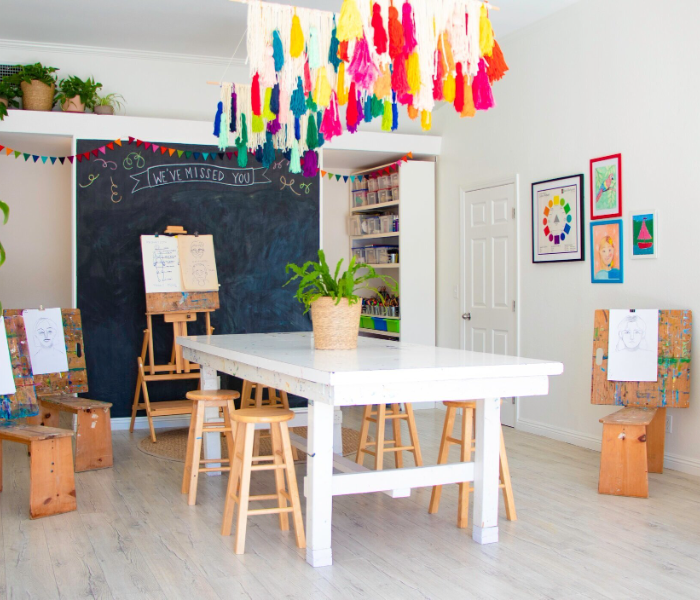Warning: Undefined array key "vp_page_image_desc" in /home/royalifems/public_html/edud/pages.php on line 37
Warning: Undefined array key "vp_section1_image_desc" in /home/royalifems/public_html/edud/pages.php on line 43
Warning: Undefined array key "vp_section2_image_desc" in /home/royalifems/public_html/edud/pages.php on line 49
Art Room
- Home
- >
- Art Room
College Art Room Facilities
The art room in a college is a creative hub where students can explore various forms of artistic expression, develop their skills, and work on individual or collaborative projects. These spaces are designed to foster creativity and provide the tools and resources necessary for producing diverse art forms, from traditional painting to digital media. Below is an overview of the typical features and facilities you can expect in a college art room:
1. Workspaces and Studios
- Individual Workstations: Each student usually has access to their own workspace, equipped with drawing boards, easels, or drafting tables, depending on the medium they are working in.
- Group Project Areas: Large tables or open spaces where students can collaborate on projects or work on larger pieces.
- Flexible Layout: Movable furniture and modular spaces that can be rearranged to accommodate different art activities, such as sculpture, painting, or installation art.
2. Painting and Drawing Facilities
- Easels and Drawing Boards: Adjustable easels and drawing boards for students to work on their paintings or sketches.
- Natural and Artificial Lighting: Well-lit areas with large windows for natural light, as well as adjustable lighting for night work or projects requiring specific lighting conditions.
- Paint Stations: Dedicated areas with sinks, palettes, and drying racks for oil, acrylic, watercolor, and other types of painting media.
- Charcoal and Pencil Sketching Areas: Spaces set aside for working with dry media such as charcoal, graphite, and pastel, equipped with fixative sprays and storage for drawings.
3. Sculpture and 3D Art
- Clay and Ceramics Stations: Workstations with pottery wheels, slab rollers, and kilns for creating ceramic pieces, along with storage for works in progress.
- Wood and Metalworking: Tools and equipment for wood carving, metal sculpting, or mixed media projects, including saws, welding tools, and grinders.
- Sculpture Stands: Movable stands and platforms for working on larger 3D pieces, with ample space for tools and materials.
4. Printmaking and Graphic Design
- Printmaking Presses: Printmaking areas with presses and materials for techniques such as etching, screen printing, lithography, and block printing.
- Silk-Screening Area: Dedicated space for silk-screen printing, with screens, squeegees, and drying racks for textiles and paper prints.
- Digital Design Workstations: Computers equipped with design software (e.g., Adobe Creative Suite, CorelDRAW) for graphic design, digital illustration, and layout projects.
5. Photography and Digital Media
- Photography Studio: Complete with backdrops, professional lighting, and cameras for shooting portraits, still life, or product photography.
- Darkroom: For students working with film photography, equipped with enlargers, film developing chemicals, and drying racks for prints.
- Digital Art and Animation Stations: Computers with tablets, software for digital painting, 2D and 3D animation, video editing, and graphic design.



